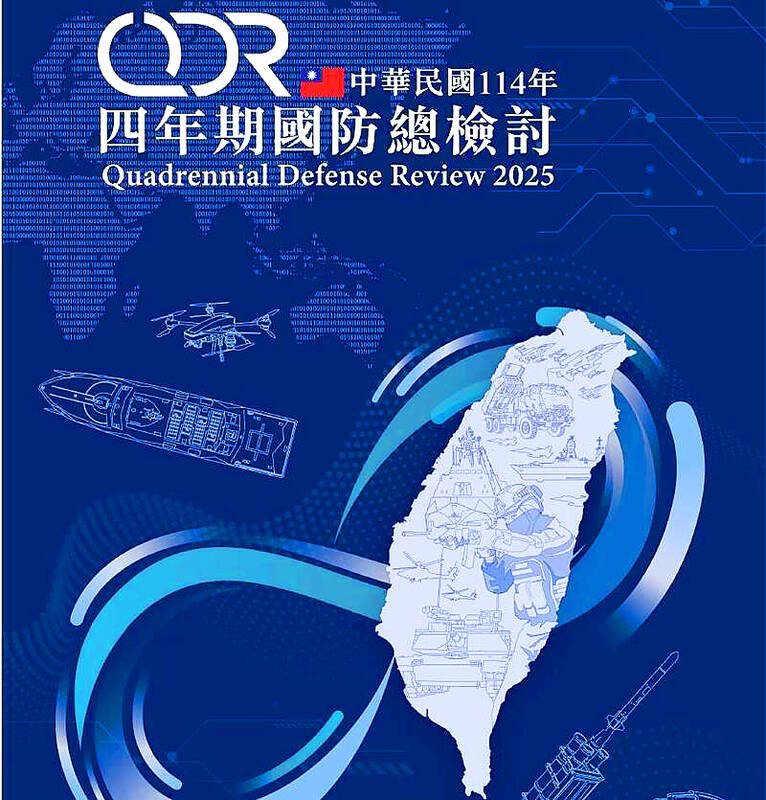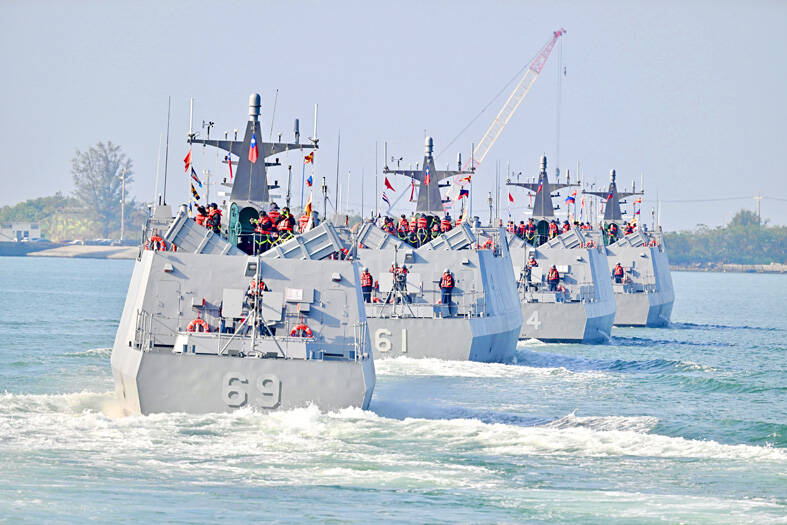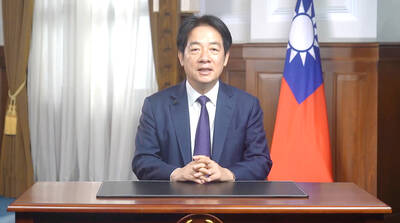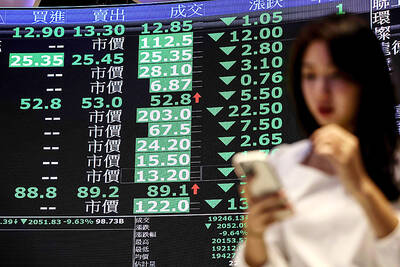The Ministry of National Defense yesterday delivered its Quadrennial Defense Review (QDR) to lawmakers, highlighting the nation’s defense strategy and elaborating on the role of US military cooperation.
Per Article 31 of the National Defense Act (國防法), the ministry must submit the QDR to the Legislative Yuan within 10 months of the presidential inauguration.
Like the 2021 QDR, the new quadrennial report focuses on building strong defenses and multilayered deterrence.

.Photo: Screen grab from the Ministry of National Defense’s Web site
The strategy would take advantage of Taiwan’s terrain to bolster the military’s “adaptability, agility, lethality, cost-effectiveness and stealth,” the QDR said.
The nation would build combat capability across land, sea, air and cyberspace to deter aggression, the QDR said.
During wartime, the ministry would rapidly mobilize, enact multiple layers of defense and lean on military-civilian integration to delay enemy actions, weaken any invading forces and force a retreat, it said.

Photo: Tu Chien-jung, Taipei Times
Future budget increases would focus on enhancing asymmetric capabilities and strengthening countermeasures to “gray zone” threats, the QDR said.
To raise the total defense budget to President William Lai’s (賴清德) target of more than 3 percent of GDP, the ministry would prioritize a special defense budget, it added.
The latest report included a separate chapter dedicated to “linking regionally to strengthen collective deterrence,” with the chapter’s first section dedicated to “deepening military exchanges between Taiwan and the US.”
The US is an important strategic partner, engages in close military exchanges and assists the nation in developing its self-defense capabilities, it said.
The ministry will continue to promote strategic cooperation with the US to maintain peace and stability in the Taiwan Strait, it added.
As for cooperation plans, the ministry would expand and deepen cooperation through strategic national security dialogues and visits, joint military exercises, defense industry cooperation and intelligence sharing, it said.
In other developments, the ministry yesterday confirmed that this year’s three-phase Han Kuang exercises began last month, with phases two and three to take place next month and in July.
According to a ministry report delivered to the legislature’s Foreign Affairs and National Defense Committee, this year’s drills would be focused on China’s “gray zone” tactics and the possibility of a Chinese invasion in 2027.
Military officers held a closed-door sandbox simulation last month, in which the joint chiefs of staff and other high-ranking military personnel reviewed this year’s joint combat plans, which have been amended based on changes made to counter information warfare, to include the whole-of-society defense resilience concept, and the issue of reservist forces, the report said.
The next session, which is to run from April 5 to 18, would use the Joint Theater Level Simulation systems to help commanders across all levels to test the validity of their plans and strategies, and how to work better with their own staff, it said.
The final results of the second stage are to be implemented in the live exercises from July 7 to 18, with all commanding officers encouraged to develop strategies that consider possible actions from enemy forces, it said.
The exercises, at different stages, expect to set the rules of engagement, implement decentralization of command, review weapon and equipment efficacy in combat situations, general logistics support, and how well the military and civilian sectors are integrated, it said.
The exercises hope to address strategies involving joint task force efforts to lock down enemy forces, implement defensive mine-laying, spread out munition supplies and logistics, test the efficacy of newly acquired weapons, and gauge how well civilian and military arms integrate with each other, the report said.

ACTION PLAN: Taiwan would expand procurement from the US and encourage more companies to invest in the US to deepen bilateral cooperation, Lai said The government would not impose reciprocal tariffs in retaliation against US levies, President William Lai (賴清德) said yesterday, as he announced five strategies to address the issue, including pledging to increase Taiwanese companies’ investments in the US. Lai has in the past few days met with administrative and national security officials, as well as representatives from various industries, to explore countermeasures after US President Donald Trump on Wednesday last week announced a 32 percent duty on Taiwanese imports. In a video released yesterday evening, Lai said that Taiwan would not retaliate against the US with higher tariffs and Taiwanese companies’ commitments to

Intelligence agents have recorded 510,000 instances of “controversial information” being spread online by the Chinese Communist Party (CCP) so far this year, the National Security Bureau (NSB) said in a report yesterday, as it warned of artificial intelligence (AI) being employed to generate destabilizing misinformation. The bureau submitted a written report to the Legislative Yuan in preparation for National Security Bureau Director-General Tsai Ming-yen’s (蔡明彥) appearance before the Foreign Affairs and National Defense Committee today. The CCP has been using cognitive warfare to divide Taiwanese society by commenting on controversial issues such as Taiwan Semiconductor Manufacturing Co’s (TSMC, 台積電) investments in the

HELPING HAND: The steering committee of the National Stabilization Fund is expected to hold a meeting to discuss how and when to utilize the fund to help buffer the sell-off The TAIEX plunged 2,065.87 points, or 9.7 percent, to close at 19,232.35 yesterday, the highest single-day percentage loss on record, as investors braced for US President Donald Trump’s tariffs after an extended holiday weekend. Amid the pessimistic atmosphere, 945 listed companies led by large-cap stocks — including Taiwan Semiconductor Manufacturing Co (TSMC, 台積電), Hon Hai Precision Industry Co (鴻海精密) and Largan Precision Co (大立光) — fell by the daily maximum of 10 percent at the close, Taiwan Stock Exchange data showed. The number of listed companies ending limit-down set a new record, the exchange said. The TAIEX plunged by daily maxiumu in just

‘COMPREHENSIVE PLAN’: Lin Chia-lung said that the government was ready to talk about a variety of issues, including investment in and purchases from the US The National Stabilization Fund (NSF) yesterday announced that it would step in to staunch stock market losses for the ninth time in the nation’s history. An NSF board meeting, originally scheduled for Monday next week, was moved to yesterday after stocks plummeted in the wake of US President Donald Trump’s announcement of 32 percent tariffs on Taiwan on Wednesday last week. Board members voted to support the stock market with the NT$500 billion (US$15.15 billion) fund, with injections of funds to begin as soon as today. The NSF in 2000 injected NT$120 billion to stabilize stocks, the most ever. The lowest amount it